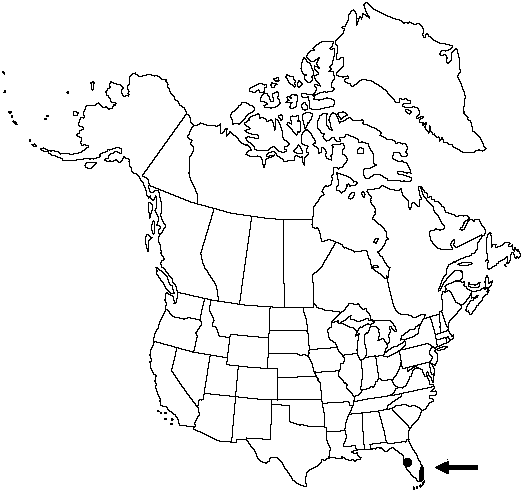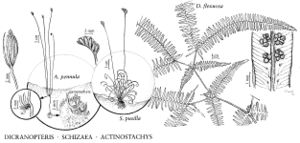Actinostachys pennula
Gen. Fil. plate 111A. 1842.
Plants extremely variable in size, 5–50 cm, those in leaf mold (only form known in flora) usually small, those in open sunny areas much larger. Leaves 1–60; rays 1–12, 4–40 mm; petioles 0.5–2 cm. 2n = 168 (Trinidad).
Habitat: On and around rotten stumps and decomposing litter in damp forests and open baylands.
Distribution

Fla., West Indies, Central America, South America.
Discussion
Small individuals of Actinostachys pennula have sometimes been called A. germanii, but plants conforming to A. germanii are merely at the end of a morphological series; they are probably juvenile. Each juvenile has a large bulbous gametophyte remaining attached (a so-called "tuber") that is sometimes mistaken for the stem. Not only is the persistent gametophyte mistaken for a stem, but in the large forms of typical A. pennula the stem is not a solitary structure. Instead it resembles a compact, intergrown bush, made up of numerous tiny, narrow stems, usually less than 1 mm diam., that proliferate from old leaf bases—a type of cauline organization apparently unknown in any other living fern but possibly found in the fossil genus Tempskya. Measurements for plants in the North American flora are all in the lower parts of the range for the species. Actinostachys pennula is among North America's most unusual ferns, a highly treasured species, sought by field botanists who must, however, respect its rarity.
Selected References
None.
